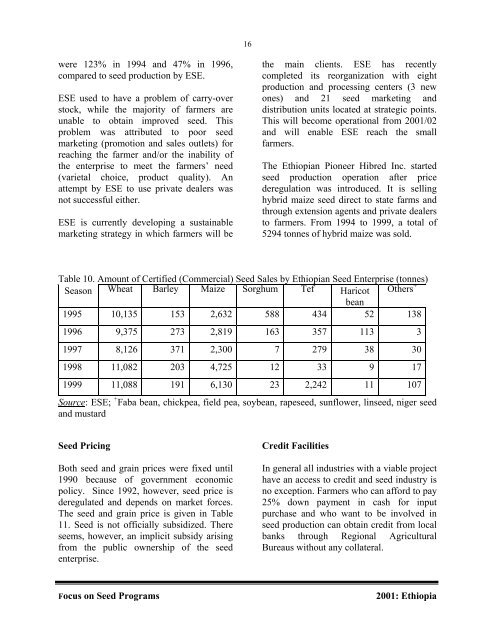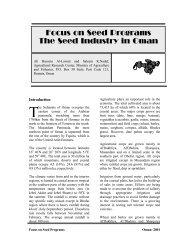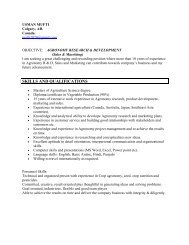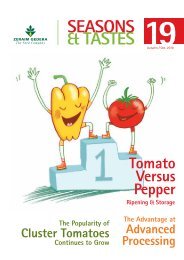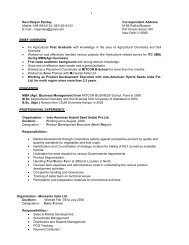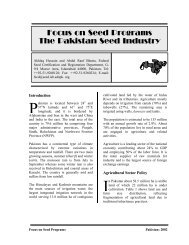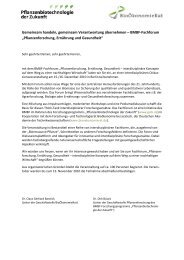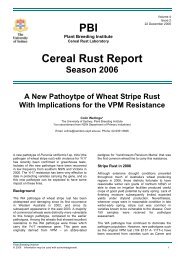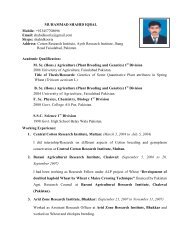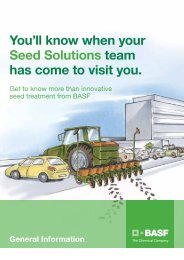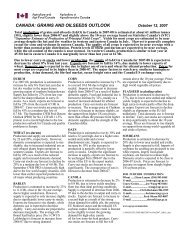The Ethiopian seed industry - SeedQuest
The Ethiopian seed industry - SeedQuest
The Ethiopian seed industry - SeedQuest
Create successful ePaper yourself
Turn your PDF publications into a flip-book with our unique Google optimized e-Paper software.
16<br />
were 123% in 1994 and 47% in 1996,<br />
compared to <strong>seed</strong> production by ESE.<br />
ESE used to have a problem of carry-over<br />
stock, while the majority of farmers are<br />
unable to obtain improved <strong>seed</strong>. This<br />
problem was attributed to poor <strong>seed</strong><br />
marketing (promotion and sales outlets) for<br />
reaching the farmer and/or the inability of<br />
the enterprise to meet the farmers’ need<br />
(varietal choice, product quality). An<br />
attempt by ESE to use private dealers was<br />
not successful either.<br />
ESE is currently developing a sustainable<br />
marketing strategy in which farmers will be<br />
the main clients. ESE has recently<br />
completed its reorganization with eight<br />
production and processing centers (3 new<br />
ones) and 21 <strong>seed</strong> marketing and<br />
distribution units located at strategic points.<br />
This will become operational from 2001/02<br />
and will enable ESE reach the small<br />
farmers.<br />
<strong>The</strong> <strong>Ethiopian</strong> Pioneer Hibred Inc. started<br />
<strong>seed</strong> production operation after price<br />
deregulation was introduced. It is selling<br />
hybrid maize <strong>seed</strong> direct to state farms and<br />
through extension agents and private dealers<br />
to farmers. From 1994 to 1999, a total of<br />
5294 tonnes of hybrid maize was sold.<br />
Table 10. Amount of Certified (Commercial) Seed Sales by <strong>Ethiopian</strong> Seed Enterprise (tonnes)<br />
Season Wheat Barley Maize Sorghum Tef Haricot Others +<br />
bean<br />
1995 10,135 153 2,632 588 434 52 138<br />
1996 9,375 273 2,819 163 357 113 3<br />
1997 8,126 371 2,300 7 279 38 30<br />
1998 11,082 203 4,725 12 33 9 17<br />
1999 11,088 191 6,130 23 2,242 11 107<br />
Source: ESE; + Faba bean, chickpea, field pea, soybean, rape<strong>seed</strong>, sunflower, lin<strong>seed</strong>, niger <strong>seed</strong><br />
and mustard<br />
Seed Pricing<br />
Both <strong>seed</strong> and grain prices were fixed until<br />
1990 because of government economic<br />
policy. Since 1992, however, <strong>seed</strong> price is<br />
deregulated and depends on market forces.<br />
<strong>The</strong> <strong>seed</strong> and grain price is given in Table<br />
11. Seed is not officially subsidized. <strong>The</strong>re<br />
seems, however, an implicit subsidy arising<br />
from the public ownership of the <strong>seed</strong><br />
enterprise.<br />
Credit Facilities<br />
In general all industries with a viable project<br />
have an access to credit and <strong>seed</strong> <strong>industry</strong> is<br />
no exception. Farmers who can afford to pay<br />
25% down payment in cash for input<br />
purchase and who want to be involved in<br />
<strong>seed</strong> production can obtain credit from local<br />
banks through Regional Agricultural<br />
Bureaus without any collateral.<br />
Focus on Seed Programs<br />
2001: Ethiopia


